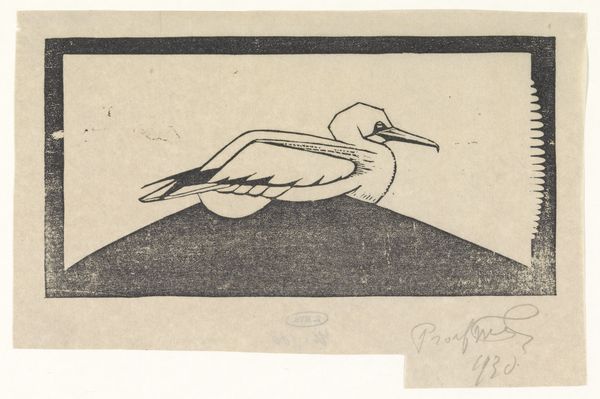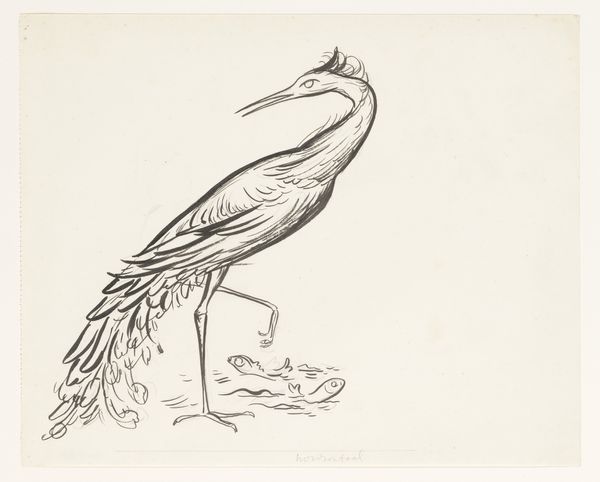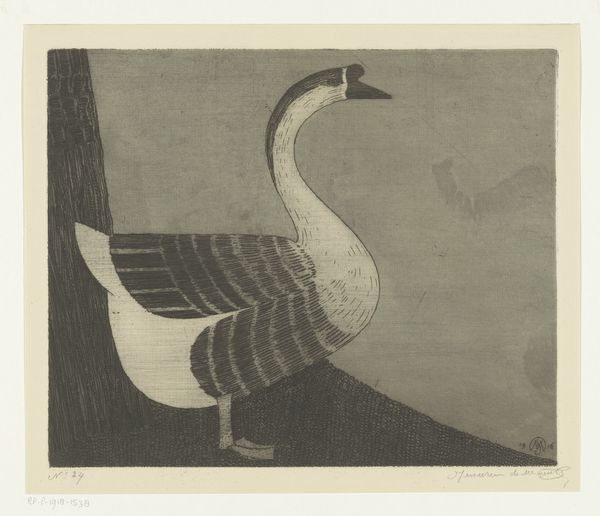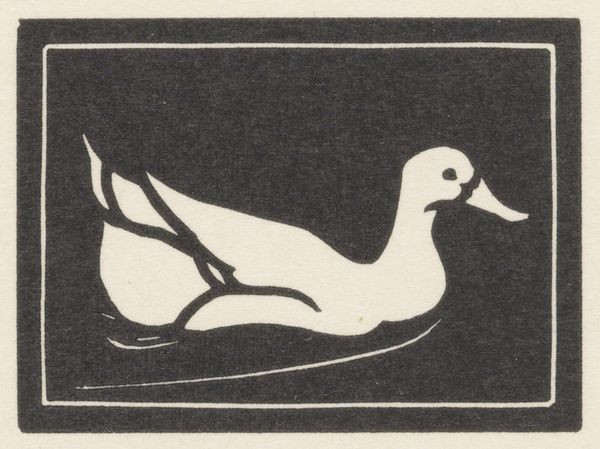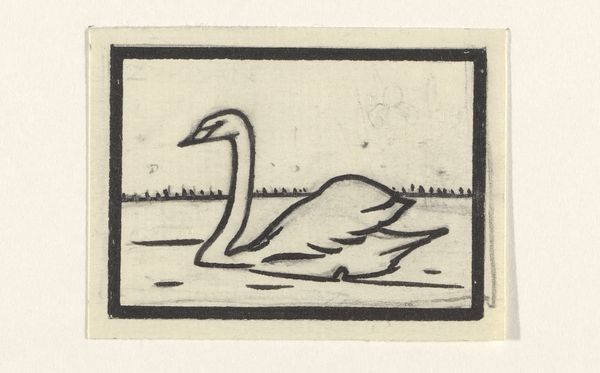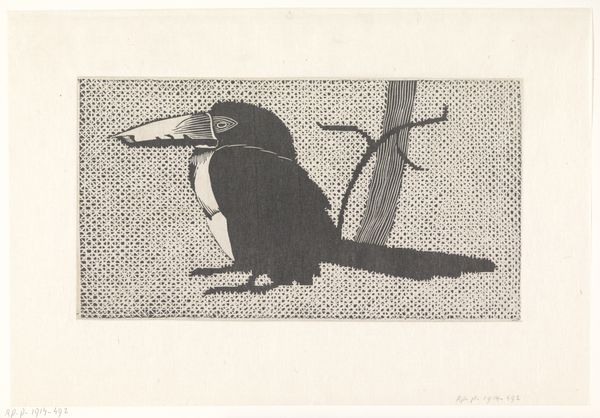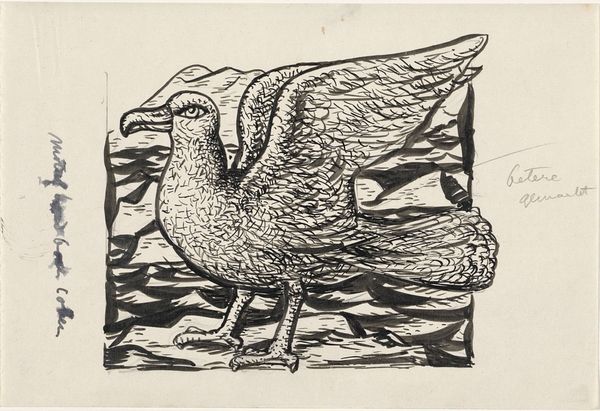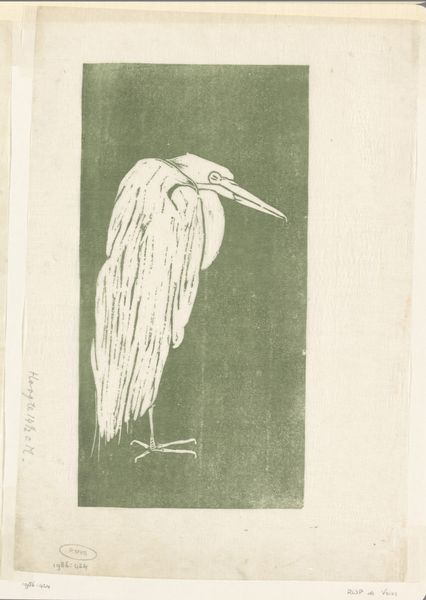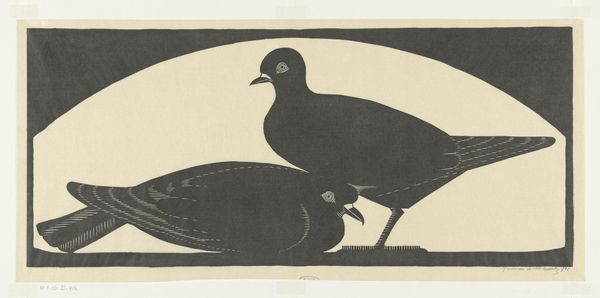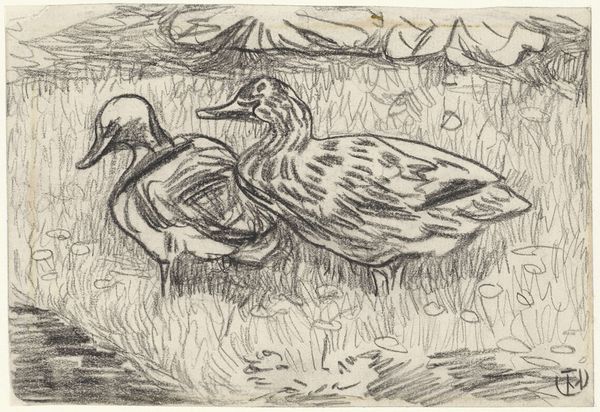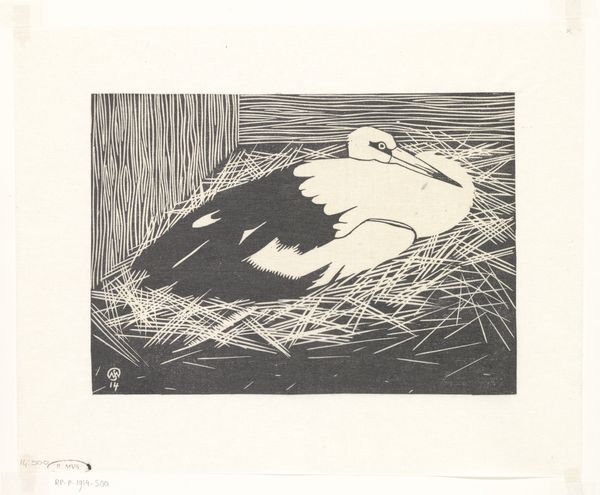
Dimensions: height 108 mm, width 220 mm
Copyright: Rijks Museum: Open Domain
Editor: Here we have Samuel Jessurun de Mesquita's 'Jan-van-gent' from 1931, a woodcut print. It strikes me as quite stark with the sharp contrasts in black and white. What's your take on it? Curator: Looking at 'Jan-van-gent', the woodcut medium is essential. The stark contrast, the angular cuts – they are born from the process. Consider the labor involved, the deliberate act of carving away material to create this image. It moves beyond simple representation of a bird. Editor: Right, you can almost feel the artist at work. The way the base is rendered, almost like cracked earth, is quite striking. Curator: Exactly! The 'cracked earth', those fractured forms, aren't just stylistic. They speak to the inherent qualities of the wood itself, its potential for splintering, for revealing the artist's hand in a very physical way. This contrasts interestingly with the smooth area and lines of the bird's plumage. Where does such difference in mark-making and labour take us? Editor: So you're saying the medium itself contributes to the meaning? It isn’t just a choice, but a statement? Curator: Precisely. It challenges traditional hierarchies that value artistic "genius" over the skilled labor of craft. The mass-producible nature of prints also implicates broader questions of artistic consumption and value within a developing industrial society. How do you interpret the composition, and it’s connection to reproduction, and consumerism at the time? Editor: That's something I hadn't considered! I was initially focused on the image, but now I see how the material and the means of production are integral to the artwork itself, and speak to its original audience. Thank you! Curator: My pleasure. It's about looking beyond the surface and questioning the very foundation of what we consider art.
Comments
No comments
Be the first to comment and join the conversation on the ultimate creative platform.

